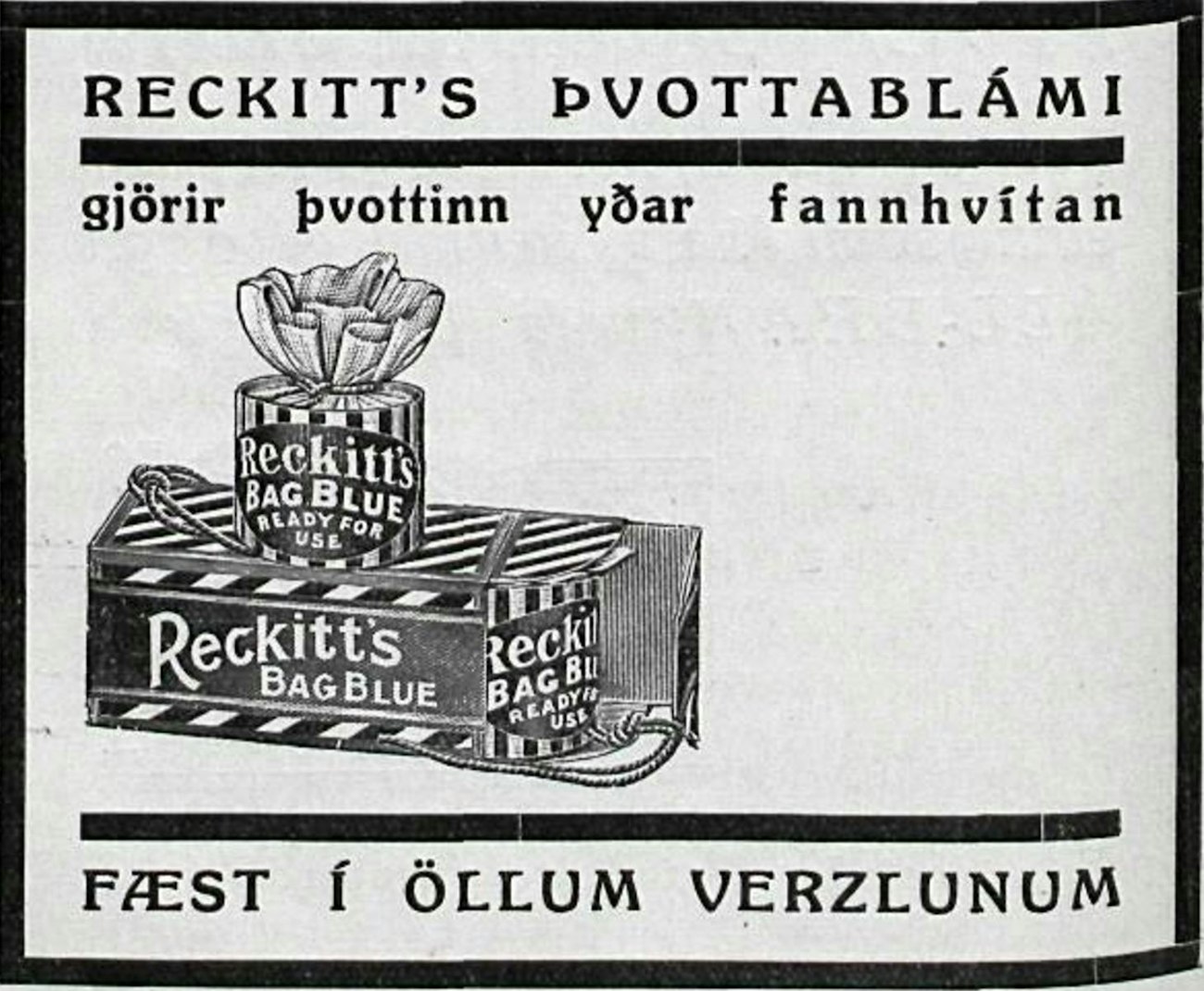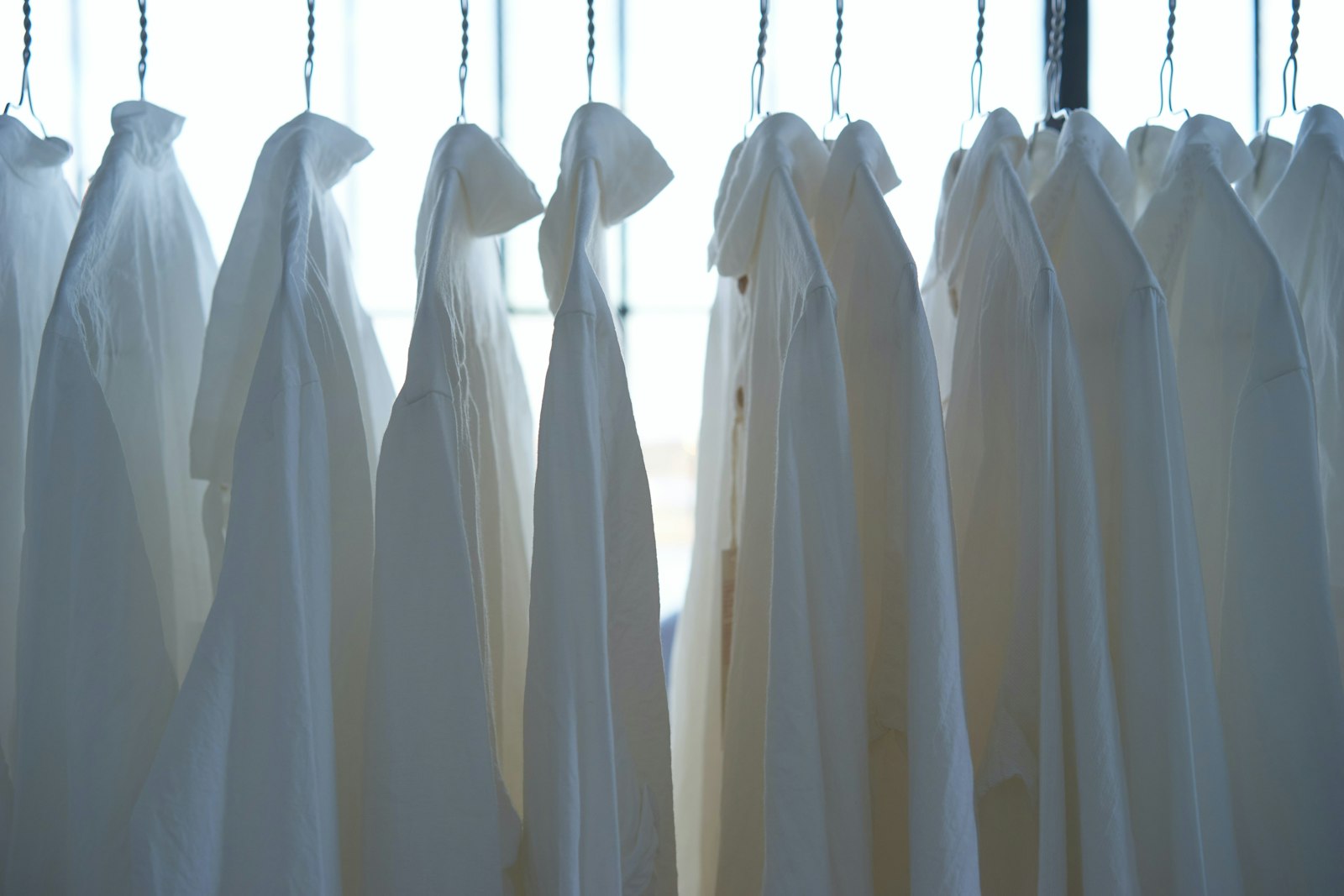I’ve written here previously about bleach and how it works, but now I want to talk about an alternative way to keep your whites looking bright—without bleach. No, I’m not talking about other bleaching agents but rather about bluing, a type of product that relies on color theory to get the job done.
True to its name, bluing (also known as laundry blue or washing blue) is a product that adds a small—very small—amount of blue dye to the wash water during laundry. Why blue? Well, when whites fade, they also yellow. Blue and yellow are complementary colors, so when you add just a trace amount of blue to the yellowed fabric, it will appear whiter.
Savvy washer folks have been using this technique for centuries, often using indigo. Sometimes the indigo would be mixed with starch and then formed into lumps, sometimes it would be sold in a liquid form. Different varieties of indigo bluing had different names—stone blue, fig blue, and thumb blue were just a few.
Because indigo easily dyed hands, bluing bags (sometimes also called blueing bags) could be used. These were small, very simple bags with an opening on top just large enough to put in the indigo. The top of the bag would then be sewn shut and/or be tied together by drawstrings or other ties. Bag strings or a stick were then used to swish the bluing bag in the wash water until the right level of tint was achieved. (Fans of Laura Ingalls Wilder might remember a mention of bluing in The Long Winter.) Bluing bags were often handmade, although premade bluing bags were also available for sale. After the bag was used, it would then be placed in a special box or dish to dry until the next time it was needed. Bluing would eventually wash out of fabric, so continual applications were required.

An Icelandic advertisement from 1933 for Rickitt’s blue bags. Photo credit: Salvor
Bluing is not without controversy, however. Queen Elizabeth I banned its use in London in 1595. At that time, mixing small amounts of dye or pigments with starch to dye ones ruffles was quite common in the upper class, and somehow blue ruffs became associated with immorality. Eventually, though, the ban was lifted.
Eventually, the indigo in bluing was replaced with Prussian blue and later synthetic ultramarine, and over time, bluing in general was replaced by bleach. Today you can still find synthetic bluing at the store (Mrs. Stewart’s and Bluette are probably the most familiar and easiest to find.) Most detergents these days use substances known as optical brighteners to do the job of bluing, without the dye. Optical brighteners absorb UV rays while also increasing the amount of blue light emitted by the fabric, giving the appearance of a whiter, brighter cloth.
Finally, if you’re wondering whether bluing and the term “blue hairs” (in reference to women of a certain age) have anything to do with one another, you’re right. Blue rinse, which works on the same theory as laundry bluing, is sometimes used to make white hair appear brighter and, in some cases, adds a blue sheen to the hair.
Happy Weaving!
Christina

